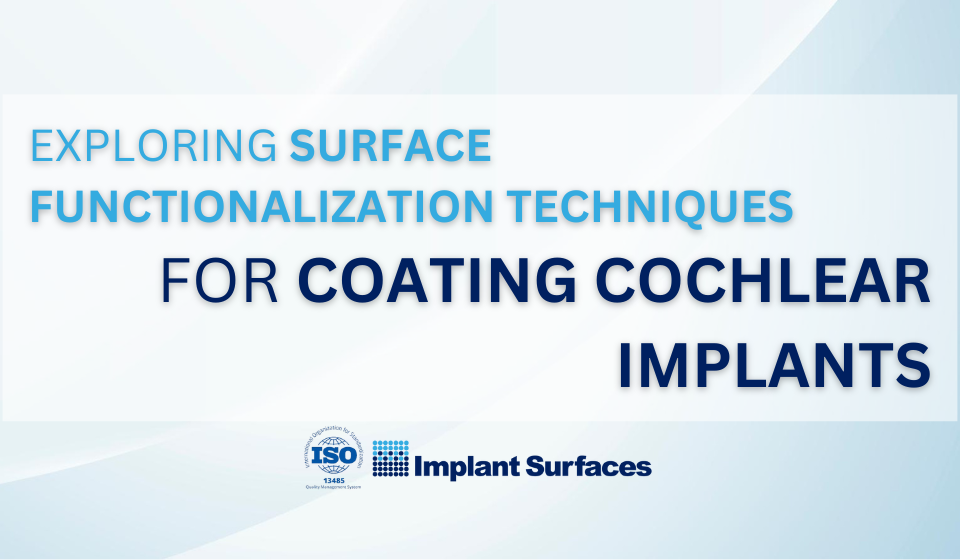
Innovations in Surface Coating Techniques: Revolutionizing Osteointegration in Maxillofacial Implants
April 29, 2024
Advancing Biocompatibility: Surface Modification Strategies for Titanium Implants
April 30, 2024In the realm of implant technology, wear and friction are critical factors that can impact the long-term success of implants. As implants are subjected to dynamic forces and mechanical stresses within the body, the materials used must withstand wear and minimize friction to ensure optimal performance and durability.
Traditional implant materials, such as metals and ceramics, have limitations in terms of wear resistance and frictional properties. However, advancements in surface coating technologies have opened new avenues for addressing these challenges and improving the performance of implants.
One innovative approach to mitigating wear and friction in implants is through the use of diamond-like carbon (DLC) coatings. DLC coatings offer exceptional hardness and low friction properties, making them ideal for reducing wear and minimizing friction between implant components and surrounding tissues. By applying DLC coatings to implant surfaces, manufacturers can enhance the longevity of implants and reduce the risk of mechanical failure.
Another promising solution for addressing wear and friction in implants is the incorporation of nanocomposite coatings. These coatings consist of nano-sized particles dispersed within a matrix material, resulting in unique mechanical and tribological properties. By tailoring the composition and structure of nanocomposite coatings, researchers can optimize wear resistance and frictional behavior, thereby improving the performance and reliability of implants in vivo.
Furthermore, bioactive coatings represent a novel approach to addressing wear and friction in implants while simultaneously promoting osseointegration. Bioactive coatings are designed to stimulate bone growth and integrate with surrounding tissues, enhancing the stability and longevity of implants. By combining wear-resistant materials with bioactive elements, manufacturers can develop coatings that not only reduce wear and friction but also facilitate bone regeneration and implant integration.
In addition to these coating technologies, surface texturing techniques offer another avenue for improving wear resistance and reducing friction in implants. By introducing controlled surface textures or patterns, researchers can modify the contact interface between implants and surrounding tissues, thereby reducing frictional forces and minimizing wear. Surface texturing techniques, such as laser ablation and etching, allow for precise control over surface topography, enabling the development of implants with optimized wear and friction properties.
In conclusion, innovative surface coating technologies hold tremendous promise for addressing wear and friction in implants and improving their long-term performance. By leveraging materials science and engineering principles, researchers and manufacturers can develop coatings that enhance wear resistance, minimize friction, and promote implant integration. As these technologies continue to advance, the future of implant surfaces looks brighter than ever, with the potential to transform patient care and outcomes in the field of implantology.




